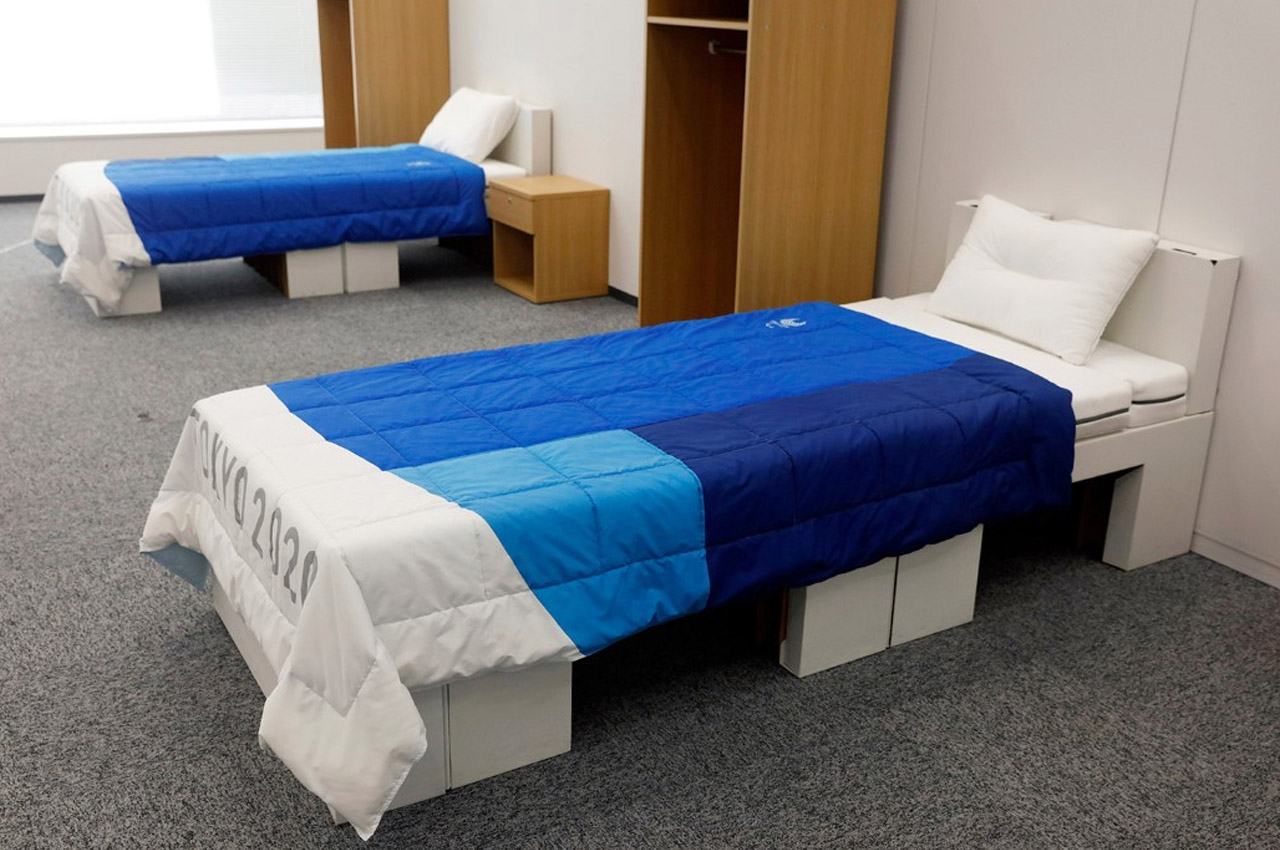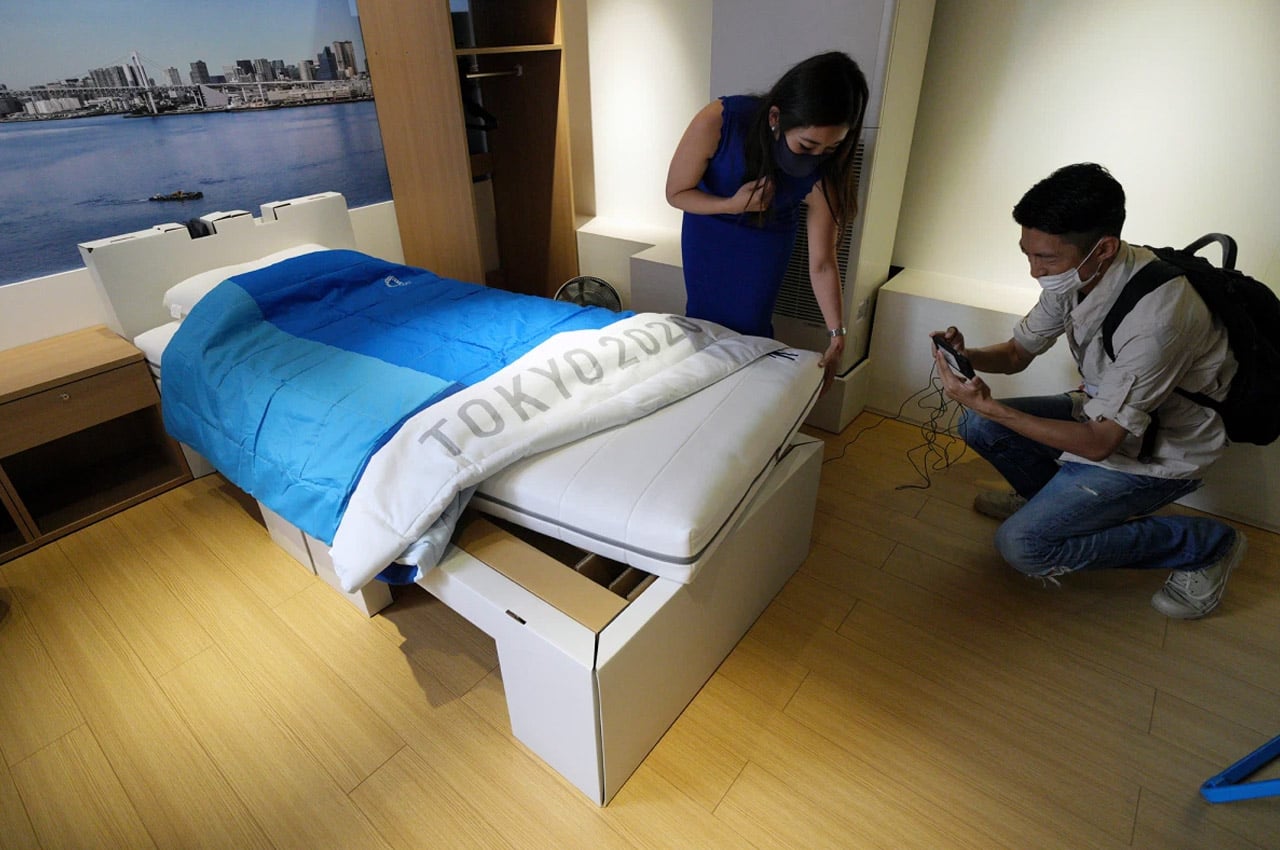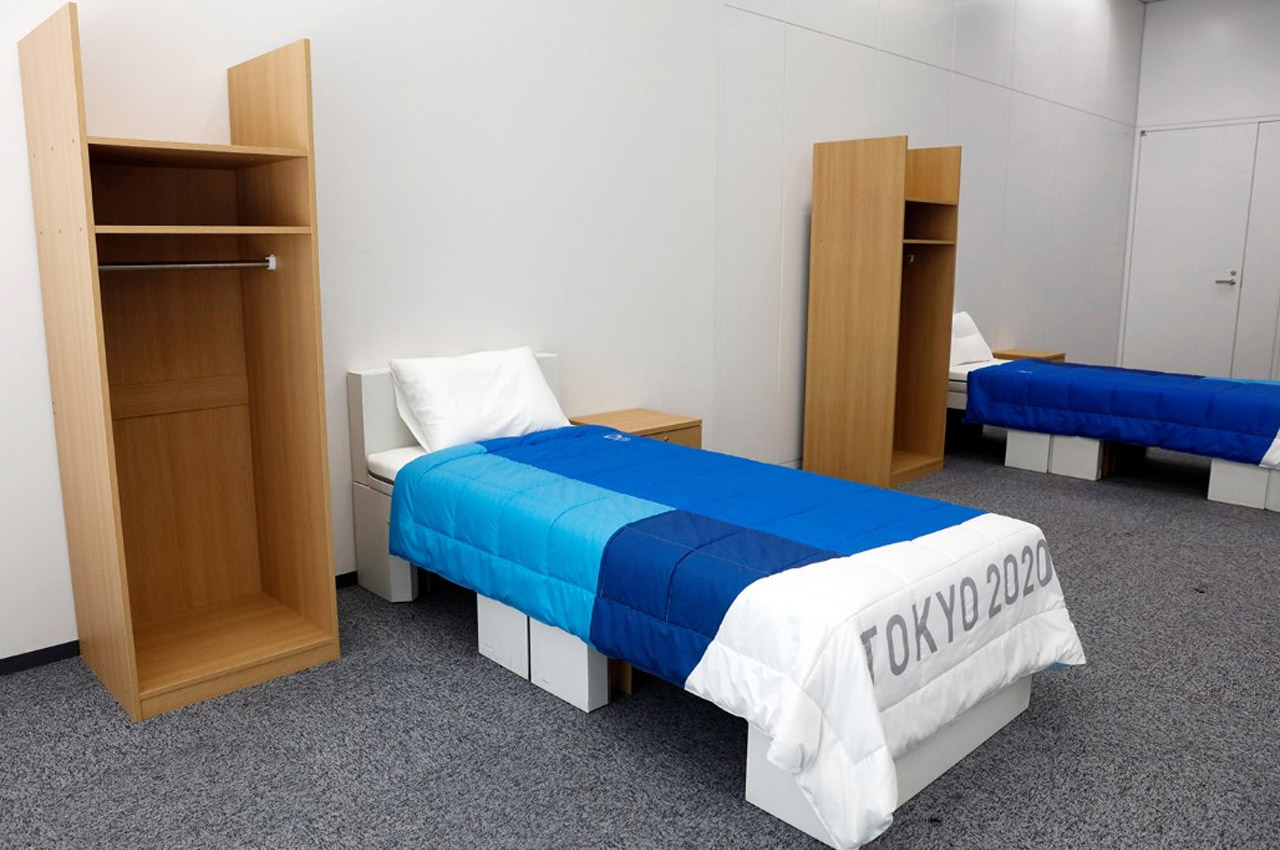
We always associate furniture with being built from traditional materials such as metal, wood, or plastic. And, although these materials create fantastic products, I do wonder if they are the most sustainable and efficient option out there. A material that furniture designers have been recently venturing into is…cardboard. Cardboard is great for building sustainable furniture, as these designs tend to leave a minimal carbon footprint, and are recyclable and biodegradable as well! Not to mention product designs crafted from cardboard tend to be light, portable, and also easy to assemble. And this collection of cardboard furniture designs is a true testament to that! I mean even Japan used sustainable low-carbon cardboard beds in the Olympic Village at this year’s Olympics. So it’s safe to say, that cardboard is slowly gaining popularity as a material option for furniture, and it may be for the best! From a chair made from 2000 pounds of recycled cardboard to a cardboard scratching post + bed for your cat – this collection of furniture designs is proof of just how versatile and unique cardboard is!


Back in January 2020, when the interiors of the Olympic village were first unveiled, the sustainable low-carbon cardboard beds immediately grabbed attention. They weren’t your normal-looking beds, in fact, they looked less like wooden beds and more like cardboard ones; because that’s exactly what they were. Japan had made it abundantly clear that they were going to focus on keeping the Olympics as environmentally friendly as possible – The medals would be made from recycled metal, the Olympic torch was fabricated from pipes previously used in temporary refugee housing during Japan’s deadly earthquake and tsunami in 2011. The beds in the Olympic village too were crafted from a unique low-footprint, high-resistance cardboard that could easily take on weights of up to 200 kilos.
Every piece of furniture that Kibardin makes is one of a kind, there is no mold and he shapes them all himself. We are now moving towards a sustainable lifestyle but Kibardin has been doing this for over 25 years – he has successfully recycled 2000 pounds of cardboard which is equivalent to saving 17 trees into sustainable furniture. To put it into perspective, 17 trees absorb 250 pounds of carbon dioxide each year and we need to ramp up the materials we use in design so that they serve a functional purpose while also contributing to slowing down the climate crisis. Using sustainable construction materials like paper and turning it into furniture that is stylish, modern, and eco-conscious is the future of long-lasting interior design.
Designer Xiang Guan redesigned the packaging for IKEA’s Hilver table to serve more of a purpose than packaging. With a pattern printed on it serving as a folding guide, the packaging for IKEA’s table turns into a stool that you can use with the said table. “Around 30.5 million tonnes of household waste are generated in the United Kingdom every year. With this in mind, FOLD is a packaging designed for IKEA’s “HILVER” table that encourages upcycling”, said Guan, who secured a Red Dot Award and Core77 Award for his innovative solution. Unlike most upcycled furniture, the Fold stool comes with a faceted design that looks good in most homes, and the print on it breaks the monotony of the brown cardboard color. The stool uses the corrugated board that comprised the packaging, with just an extra rubber band to hold it in place, making it not only convenient to assemble but also easy to disassemble and recycle after it finishes serving its purpose.
Rosan Bosch, a Danish designer has collaborated with the innovative furniture maker Stykka to give us Wonder DIY – a set of simple cardboard kits that encourage learning as well as provide functional usage. Wonder DIY has four different kits that come with cardboard elements that allow your child to create their own learning landscape. As they make their own ‘desks’, it gives them a sense of owning their space and creating a physical learning environment outside of school. Children can learn and be entertained as they build, re-build, and re-invent their learning space – playfulness and purpose make the core of these kits! “Adults are not the only ones who feel like their lives are out of control because of the coronavirus,” says Bosch. “Children are feeling it as well. These kits are designed to empower them and make them feel in control of their environment on some level.”
Designed as a packaging solution for Pampers, P-Box is an innovative project that can help the diaper brand reduce its packaging waste. The aim was to give more meaning to the cardboard shipping boxes by transforming them into simple (yet special!) things. The online shopping industry is massive and shipping boxes are the largest recyclable waste category – in fact, based on data there are 50 million tons of discarded cardboard boxes that became waste in China which is also one of the largest markets and manufacturers for the industry. So P-Box gives these cardboard boxes a new purpose by turning them into innovative objects for daily use. You can turn it into a cat shelter, a lightweight stool that can be flat-packed, use it to store items you only occasionally use like that guests-only dinnerware, and lastly it can also be used as a sustainable alternative to gift bags/wrapping papers.
Made out of 3 pieces of corrugated cardboard, the Octa can become a rather sturdy stool capable of taking a grown human’s weight. In fact, it can even be height adjusted by simply determining the depth of the incision you make in the cardboard pieces. In that sense, you can literally have a table and stool assembled with 6 sheets of cardboard. The structure employs 8 interlocked pyramids that help disperse weight along the edge of the corrugated cardboard sheet. It uses paper, ensuring that the product is recyclable, and can even be produced from recycled wood/paper. Since the production of wooden goods emits less amount of carbon dioxide than that of metal or plastics, the Octa has a rather small carbon footprint.
Cat Person provides ‘whole cat care,’ as they call it, which means they’ve considered everything, even giving the shipping containers a second purpose. The team at Cat Person knows that your cat will inevitably find its way to a cardboard box in the recycling corner, so they’ve made their shipping containers convertible into feline-friendly toys. Cat Person looked to industrial design to make further use of cardboard boxes and found transformation possible in corrugated cardboard and seams. Chris Granneberg, a California-based industrial designer, SLATE, a San Francisco-based strategic design studio, and Paul Davis, a UK-based illustrator, were all called on by Cat Person to seamlessly turn their cardboard shipping boxes into playhouses fit for felines.
This cardboard chair is 100% recyclable, biodegradable, and easy to assemble! The MC 205 Cardboard Chair can be flat-packed and requires no tools to put together – something better than puzzles for game night? There were 13 prototypes before the MC 205 was finalized and now the company has released MC 207 which has been tweaked to be more comfortable. The team has also built upon the chair by adding more furniture like couches, tables, and counters made with the same principle. Imagine this but in the shape of the Iron Throne!
Created with 100 corrugated sheets lined up to form a highly textured ring with a comfy felt base, the KATRIS Nest is a tactile delight. Designed for rubbing, scratching, and resting, the Nest uses sturdy but lightweight materials, and comes with a removable felt cushion to reveal a periodically replaceable corrugated scratching pad at the bottom. The Nest isn’t like most cat products. It taps into a slightly bizarre side that seems pretty cat-appropriate. Given how cats are obsessed with cardboard boxes, the Nest pretty aptly chooses corrugated cardboard as its primary material, with a felt base for comfort. The bed’s shape and size are perfect for a cat to comfortably snuggle into, while the removable base turns the bed into a massaging+scratching toy to keep the cat entertained.
Revaz Berdzenishvili created a unique stepped storage unit called Kibe. Kibe means stairs in Berdzenishvili’s native language Georgian. The unit features an interesting stepped design that can be used to showcases objects, as well as store them in the drawers that have been incorporated into the design. The piece consists of the main enclosure and five storage units. It leaves barely any cardboard waste after it has been assembled. It’s a delicate piece of furniture that is not only sustainable but also quite easy to use.